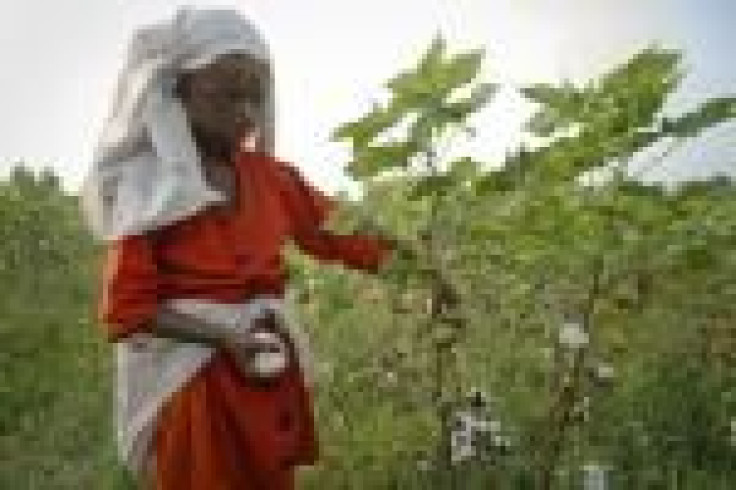Slavery In The Modern World: The Saga Of India’s Child Cotton Laborers

A report by an anti-slavery organization cited India as having the world’s highest number of slaves – approximately 14 million, a little less than half of the global population of slaves, according to Australia-based rights campaigner Walk Free Foundation.
The Global Slavery Index 2013 ranked India, China (2.9 million) and Pakistan (2.1 million) as nations with the largest absolute number of people living in conditions of modern slavery, which includes being trapped in debt, forced marriage and human trafficking.
Within India itself, a large percentage of slaves are children who toil in the cotton industry, often for little or even no pay. The BBC reported that girls as young as 10 or 11 years old pick and process raw cotton in brutal conditions – one end of a fabulously lucrative global business that ultimately provides clothing for high-end shops in the West.
"The workers' lives are terrible," labor activist Jignesh Mevani told the BBC. "They are not paid the minimum wage. There are no safety precautions. There are many children."
Wealthy landowners exploit the cheap labor (most of whom are tribal peoples from impoverished rural areas).
A child named Kali, who said she was 10 years old, and her older sister Ashi, 20, sometimes work 16 hours a day picking cotton.
"We came here [in Gujarat] four or five months ago from Rajasthan," Ashi said. "Now we live here. The work is hard. We don't know where our parents are. They are working somewhere."
In some cases, the meager salaries that the children earn from the cotton company owners either goes directly to their parents or to the labor agents who recruited the children from poor villages for the back-breaking work.
"[One third] of the [cotton] workers may be children," said Sudhir Katiyar of Prayas Centre for Labor Research and Action.
"Children are at every stage of the process, seeding cotton, picking it and ginning and beyond too.”
The International Labor Rights Forum stated in a report that the use of child labor in the production of cottonseed is particularly widespread in the state of Andhra Pradesh.
“Children, especially girls, are employed by farmers in order to cut costs, as they are paid well below the minimum wage and the wages paid to adult workers,” the ILRF said.
“The child workers are often in a state of debt bondage since their employers pay an advance to the children’s parents and then they must work to meet the amount paid. The children generally work at least nine hours a day, but during the winter, they often work up to 12 hours a day.”
India is estimated to have as many as 500,000 child cotton workers – itself an illegality since no one under the age of 16 can legally work in India under their constitution.
The children are not only subject to financial exploitation and dangerous conditions, but they are also at risk of developing lung disease from the choking cotton dust.
The ILRF noted that the health of children working with cotton is also damaged by pesticides used during production – exposure causes headaches, physical weakness, disorientation, convulsions and respiratory ailments. The labor rights activist group identified multinational corporations Monsanto (NYSE:MON) and Bayer AG (FRA:BAYN) as “major purchasers” of cottonseeds from the region.
“While the companies have started to take action to address the concerns of workers and civil society, there is still much more work to be done to end child labor in the industry,” the ILRF stated.
The United Nations Children's Fund described the plight of a 14-year-old girl named Mani who labored in the cotton fields in the state of Karnataka under the watchful eye of an abusive landowner.
“He scolded us with bad words and would strike us on the legs, back and shoulders,” Mani said. But because a farmer had loaned her parents 20,000 rupees (about $326) in exchange for four years of their daughter’s labor, she could do nothing.
“We have a lot of poverty. That’s why we sent her,” said Mani’s mother, Sundamma. “I don’t want her to work. After the fields, she has red eyes, her hands are sore, and sometimes she vomits and gets dizzy from [the] sun. I do want my daughter in school. She’s happy there.”
Mani was ultimately freed and returned to school, but most child cotton workers never see the inside of a classroom.
Cotton is a huge industry in India and provides millions of jobs and export revenues.
Reuters reported that India is the second-largest cotton producer in the world after China, and is expected to have a bumper crop this year. For fiscal 2012-2013, India earned $8.94 billion from cotton exports, nearly 3 percent of the total export revenue.
© Copyright IBTimes 2024. All rights reserved.











